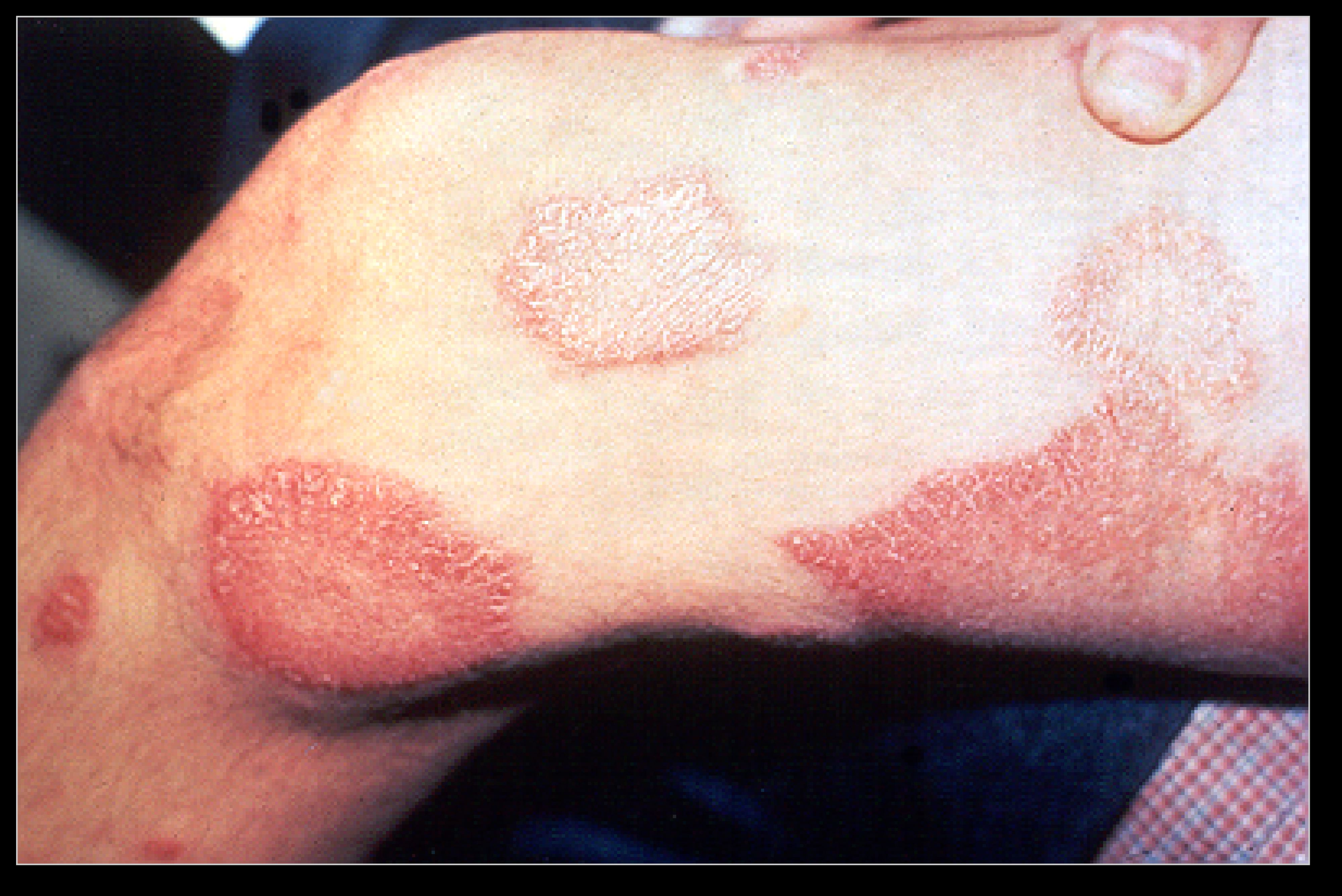Leprosy physical examination: Difference between revisions
Jump to navigation
Jump to search
Joao Silva (talk | contribs) (→Skin) |
Joao Silva (talk | contribs) (→Skin) |
||
| Line 36: | Line 36: | ||
* In ''mid-borderline'' and ''lepromatous leprosy'' (or ''multibacillar'' in the [[WHO]] classification]] [[lesions]], central area is often [[anesthetic]]. | * In ''mid-borderline'' and ''lepromatous leprosy'' (or ''multibacillar'' in the [[WHO]] classification]] [[lesions]], central area is often [[anesthetic]]. | ||
* In ''borderline lepromatous leprosy'', [[lesions]] are often [[erythematous]] [[macules]] and/or [[papules]], symmetrically distributed throughout the [[body]]. [[Nodular]] lesions are often present and there may be areas of normal [[skin]] between the [[lesions]], however, the margins of the [[lesions]] are often diffuse, instead of well-defined. Larger [[lesions]] often have an asymmetrical diffusion. | * In ''borderline lepromatous leprosy'', [[lesions]] are often [[erythematous]] [[macules]] and/or [[papules]], symmetrically distributed throughout the [[body]]. [[Nodular]] lesions are often present and there may be areas of normal [[skin]] between the [[lesions]], however, the margins of the [[lesions]] are often diffuse, instead of well-defined. Larger [[lesions]] often have an asymmetrical diffusion. | ||
* In ''lepromatous leprosy'', lesions are often generalized throughout the body and be of macular, papular or nodular origin. In this class of leprosy, there is often loss of body hair, particularly of the eyebrows and eyelashes as well as nodular thickening of the | * In ''lepromatous leprosy'', lesions are often generalized throughout the [[body]] and be of [[macular]], [[papular]] or [[nodular]] origin. In this class of leprosy, there is often loss of [[body hair]], particularly of the [[eyebrows]] and [[eyelashes]] as well as [[nodular]] thickening of the [[earlobe]]s. | ||
{| | {| | ||
Revision as of 22:34, 5 July 2014
|
Leprosy Microchapters |
|
Diagnosis |
|---|
|
Treatment |
|
Case Studies |
|
Leprosy physical examination On the Web |
|
American Roentgen Ray Society Images of Leprosy physical examination |
|
Risk calculators and risk factors for Leprosy physical examination |
Editor-In-Chief: C. Michael Gibson, M.S., M.D. [1]; Associate Editor(s)-in-Chief: João André Alves Silva, M.D. [2]
Overview
Paucibacillary Hansen's disease is milder and characterized by one or more hypopigmented skin macules. Multibacillary Hansen's disease is associated with symmetric skin lesions, nodules, plaques, thickened dermis, and frequent involvement of the nasal mucosa resulting in nasal congestion and epistaxis.
Physical Examination
Vitals
- A fever may be present.
Temperature
Pulse
Rate
Rhythm
Strength
Symmetry
Blood Pressure
Respiratory Rate
Skin
- Painless cuts, wounds and burns are often present, predominantly on the hands, arms, legs and feet.
- In tuberculoid leprosy (or paucibacillar in the WHO classification), larger hypopigmented or erythematous macules are often present.
- In borderline tuberculoid leprosy (or paucibacillar in the WHO classification), macules are often sharply defined with a central clearing, more numerous than the in previous category and generally located on one side of the body.
- In mid-borderline and lepromatous leprosy (or multibacillar in the WHO classification]] lesions, central area is often anesthetic.
- In borderline lepromatous leprosy, lesions are often erythematous macules and/or papules, symmetrically distributed throughout the body. Nodular lesions are often present and there may be areas of normal skin between the lesions, however, the margins of the lesions are often diffuse, instead of well-defined. Larger lesions often have an asymmetrical diffusion.
- In lepromatous leprosy, lesions are often generalized throughout the body and be of macular, papular or nodular origin. In this class of leprosy, there is often loss of body hair, particularly of the eyebrows and eyelashes as well as nodular thickening of the earlobes.
 |
Head
- Facial paralysis may be present.
- Lack of eyebrows and eyelashes may be present.
- Lumps are often present, predominantly on the face and earlobes.
Eyes
- Lagophthalmos is often present.
- Blindness may be present.
Ears
Nose
- Collapsed nose may be present.
- Perforated nasal septum may be present.
Throat
Neck
Lungs
Heart
Auscultation
Abdomen
Extremities
- Weakness of the hands and feet may be present.
- Claw fingers are often present.
- Foot drop is often present.
Neurologic
- Sensory loss is often present, predominantly on skin lesions and on the territories located after enlarged peripheral nerves.
- Paresthesias are often present, predominantly in the hands and feet.
- Tender and/or enlarged peripheral nerves are often present.